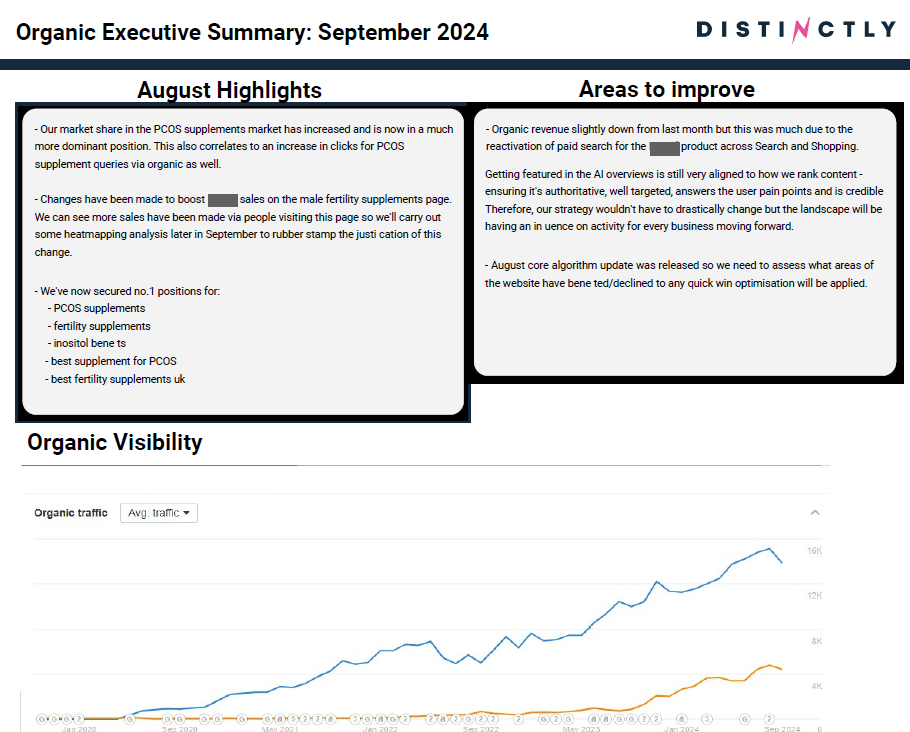While day-to-day PR reports get into the nitty gritty of media monitoring, periodic reviews and campaign washups take a step back, looking at wider context, learnings, and next steps.
Let’s get into examples of both…
Here are five real-world PR report examples that stand out for their clarity and focus.
The “Exec-friendly one-pager” PR report from Rise at Seven
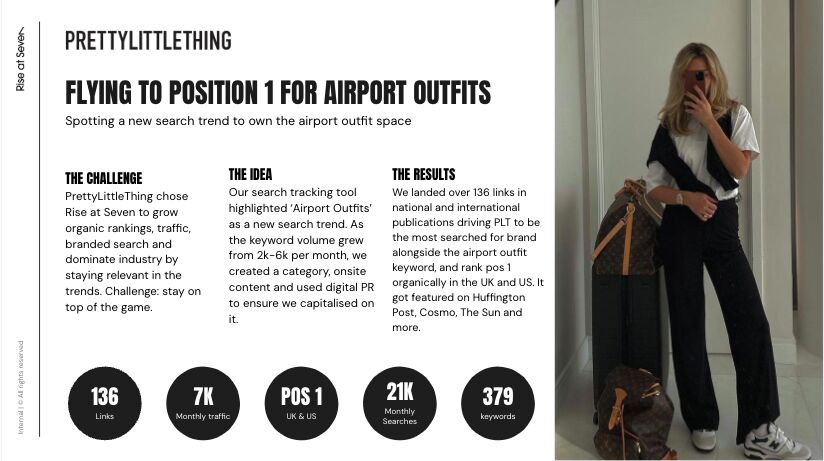
This one-page summary presents high-level results, perfect for senior stakeholders who need quick insights without getting bogged down in details.
Key metrics, like site traffic and sales generated, are presented through a clear narrative arc: the challenge, the idea, the results.
PR reporting is so much more than just how many links or coverage you’ve achieved for your activity. We have the ability to align this much closer to a brand or businesses’ overall objectives and goals. When we’re looking at reporting we focus on rankings, traffic, sales and in the end how much ££££ our campaigns have driven.
The “PR supplement” report from Cedarwood Digital

This PR report example from Cedarwood Digital gives a quick snapshot of digital coverage, showcasing the campaign’s success in terms of links and authority.
The “supplement” report is great for clients who don’t need full PR play-by-plays—either because they’re more invested in other channels, or because reporting is regular enough that they’re already up to speed.
This is an example Digital PR report that we attach to our SEO report - we find it’s quite top level - but it works well for our clients.
The “monthly deep-dive” PR report from Distinctly
This is a solid example of a monthly PR report from Lauren Field, Senior Digital PR Manager at Distinctly, offering the exec summary and next steps up front, followed by a deeper-dive into campaign activities, organic visibility, media coverage, and competitor analysis.

It’s clear from the content that the Distinctly team reports on results across multiple channels, and throughout the entire sales funnel. If you’re looking to report holistically on your PR performance, get inspiration from the full report here.
The “campaign wrap up” PR report example from Kaizen

This PR report from Shakira Sacks, PR Lead at Kaizen, is a great example of a well-structured campaign wrap-up.
It follows a logical and easy-to-read flow, moving through Campaign Overview > Results > Wider Impact > Next Steps.
High-level performance summaries, paired with the right amount of context, make this report ideal for mid-level managers or clients.
For more inspiration, check out the report in full here.
The “live coverage” PR dashboard from Escherman
This live reporting dashboard, built by Andrew Bruce Smith, Founder of Escherman agency, integrates cross-channel PR metrics like coverage authority and social shares.
PR dashboards don’t tend to give the recipient a whole lot of context. As such, they tend to be better for internal teams, or clients who prefer regular updates and minimal hand holding.
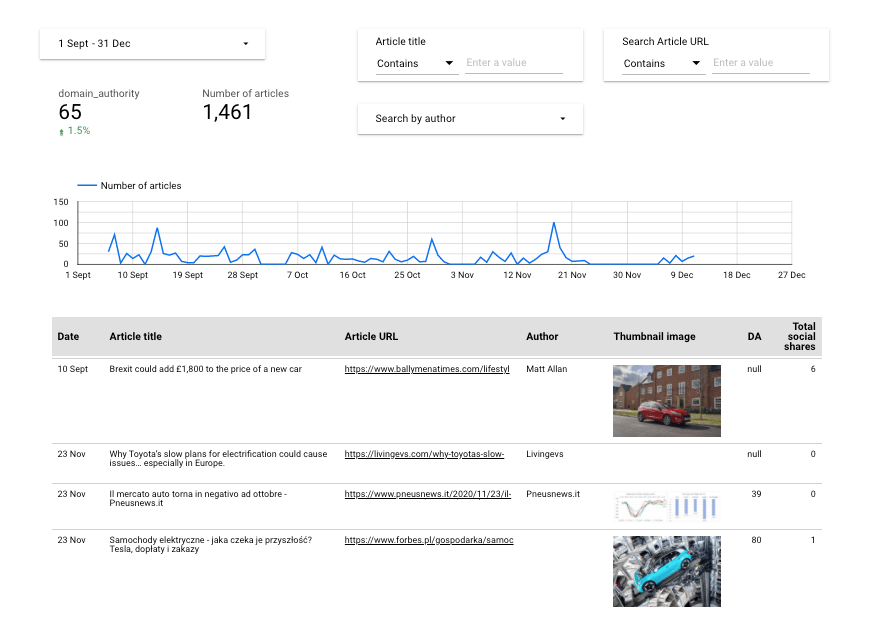
Now you’ve seen some examples of real PR reports, here’s how to create them.
Here’s the TL;DR:
- Keep your reporting simple by focusing on one clear goal.
- Tailor the content, metrics, format, and cadence to your audience
- Don’t overdo it—stick to key insights and recommendations to keep things clear and actionable.
A great PR report doesn’t overwhelm the reader with information. Instead, it focuses on the most important insights and clearly answers a key question. Think of it as a scientific study, with a central hypothesis that needs testing.
Examples:
- Did we successfully drive traffic back to our site?
- How much additional awareness did we create with influencers?
- Did we successfully turn awareness into product sales?
A single-minded objective will keep you on track.
Your audience is the most important thing to consider when you start building your report.
Ask yourself: Do they really need to know this? What do they actually care about? How do they prefer to consume information?
Doing this will help you create reports that keep your clients coming back.
Different audiences will be interested in different ways of measuring goals. For example, on-the-ground teams are more likely to care about granular KPIs like the number of dofollow links.
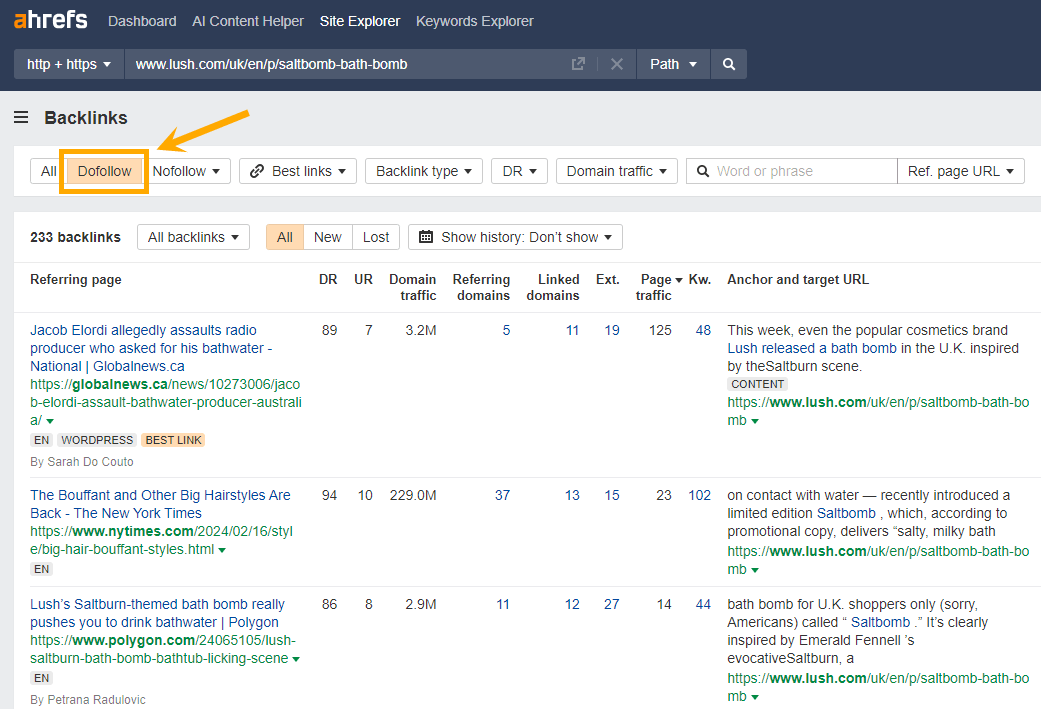
C-suite or Directors, on the other hand, will want to see the top-level impact of your strategy.
They’ll prefer overarching PR KPIs like share of voice uplift across a number of campaign-relevant terms.
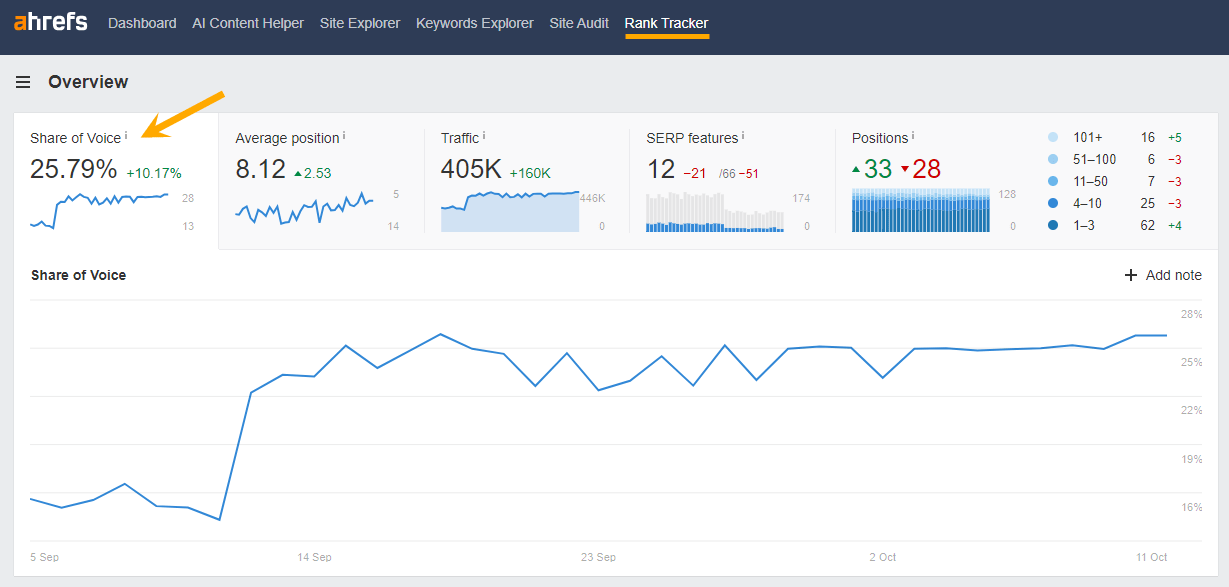
Or even site-level share of voice uplift vs. competitors.

The best reports don’t rely solely on numbers—they use charts, graphs, and visuals to tell a story.
If you’re planning to handle your PR reports yourself, Google Sheets or Docs are solid choices, but they can be a bit limiting in terms of design and flexibility.
That’s why a lot of PR pros go for more visual tools like Looker Studio or Canva.
If your audience is a senior exec, they’ll typically want a well-designed report featuring top-level summaries, carefully curated stats, and performance headlines.
Clients usually expect a white-labeled report with a healthy amount of context on deliverables and results, given they’re not involved in the day-to-day of it all.
And on the ground PRs or internal teams (like you) need live, granular reports, to iteratively review and develop strategy. In-platform data, spreadsheets, and Looker dashboards are format favorites for these bread-and-butter PRs.
Ahrefs’ new PR reporting dashboard is a great example. It gives you a live overview of link and search performance based on your Content Portfolio (ie. your own specified list of URLs).
Here’s what it looks like:
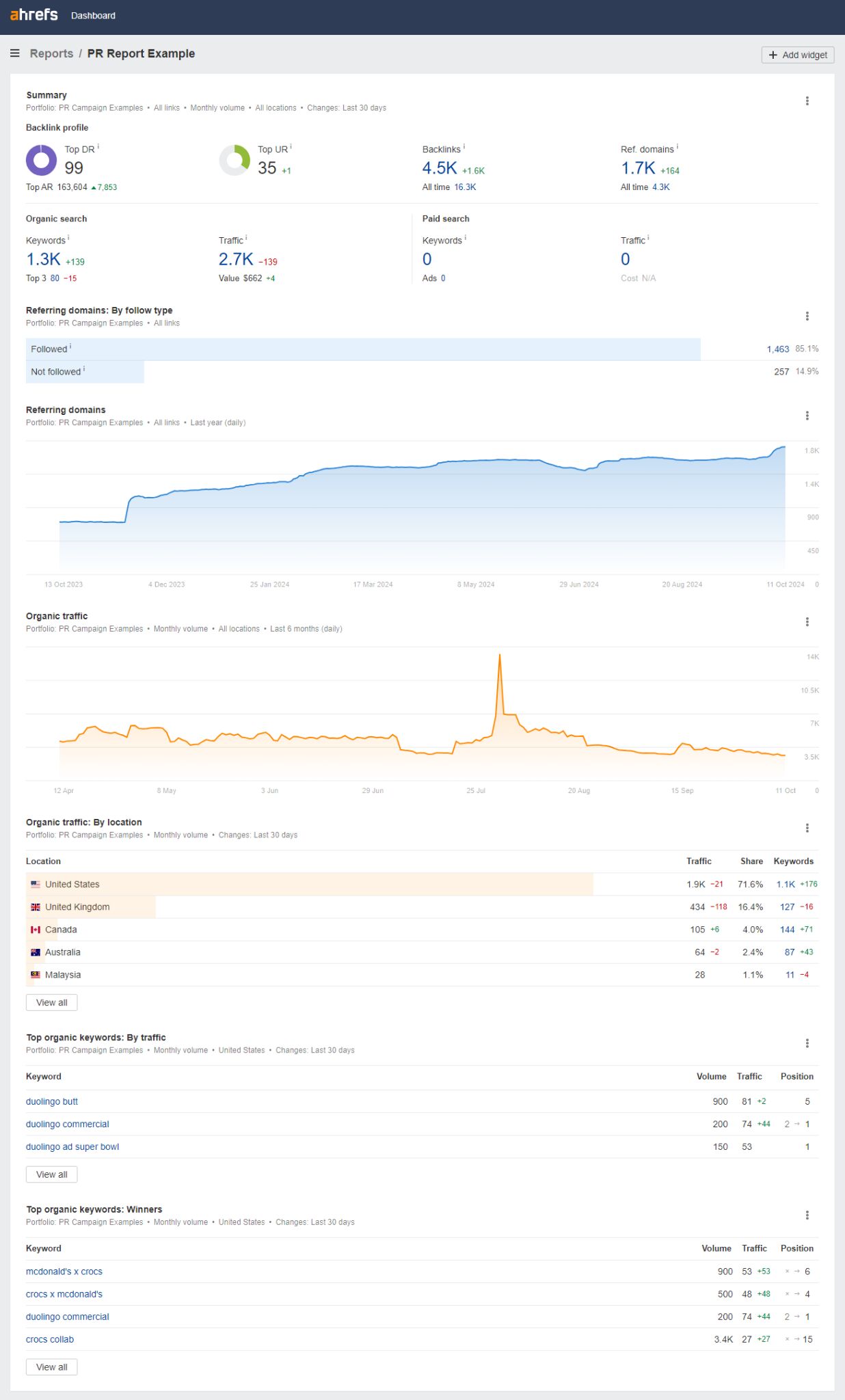
Your campaign goals and your audience are the two main things that should determine your reporting cadence.
For instance, if you’re reporting to the rest of your team, do so on a live and ongoing basis.
But if you’re presenting results to senior execs, you’ll be analyzing that data on a monthly, quarterly, yearly—or even sales-cycle dependent basis, if that’s how long it takes for you to see results.
There’s a tendency in PR to over-report. Carving out a clear narrative arc will keep you on track.
The best PR reports I’ve seen stick to this loose formula to deliver healthy insight:value.
- Exec summary (goal and campaign overview)
- Top wins
- Expectation vs reality (carefully curated charts that guide the story)
- Recommendations and next steps
Bank these templates to speed up your PR reporting—feel free to delete any components that aren’t relevant to your goal or audience.
PR campaign report template
Ready to create your own PR report? Here’s a simplified template you can customize for your campaigns…

Ongoing media coverage template
This next PR report template comes from Digital PR Lead, Alice Walker-Gibbons, from Embryo Digital.
If you’re analyzing the impact of your ongoing media coverage, this Google Sheets example will give you some key metrics to consider in your PR reporting.

Quarterly PR report template
Alex Jones, Head of Digital at Cartwright Communications, has developed a follow-along template that reflects his team’s approach to PR reporting.
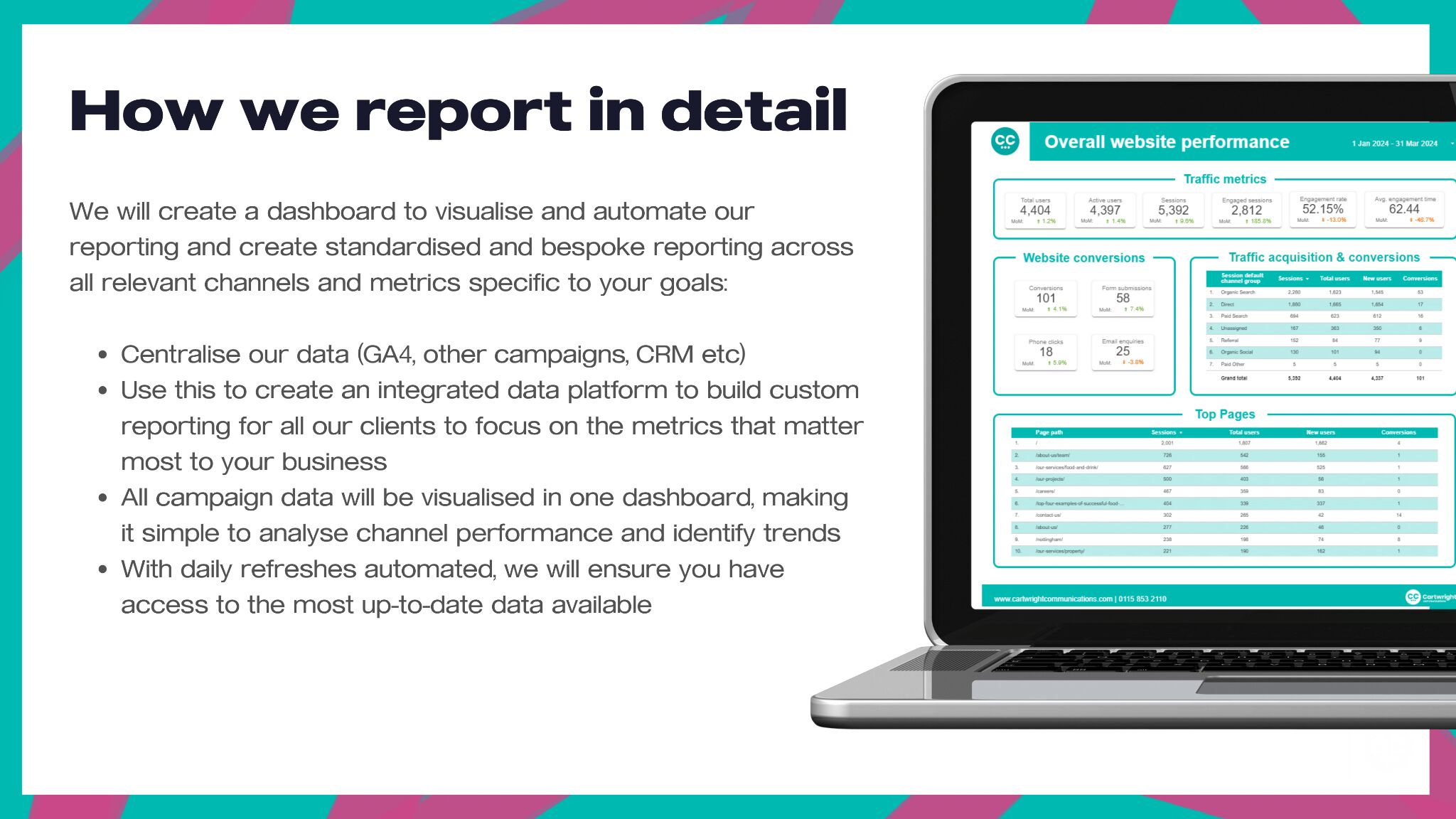
Here’s what he has to say:
For digital PR reporting, we often split our monthly and quarterly reports into the following Primary Owned Goals:
- Volume of links
- Quality of links
- Relevance of links
- Domain Rating
- Trust Flow
We also add in the share of voice and sentiment analysis if these contribute to the client’s goals. We then split our reports into Secondary Shared Goals (SSGs):
- Keywords/rankings
- Traffic/sessions
- Conversions
- Revenue growth
Essentially, we want to analyze ranking and keyword changes in line with links acquired and then the impact on traffic and sessions. This can also tie back goal completions and any revenue driven as a result.
Wrapping up
When it comes to PR reporting, less is often more. Keep it clear, focused, and tailored to your audience’s needs.
If you’re wise about it, your PR reporting will not only prove the impact of your hard work, it will bring you repeat business, bigger budgets, and more creative control.
So, go ahead and bookmark these examples for inspiration.


